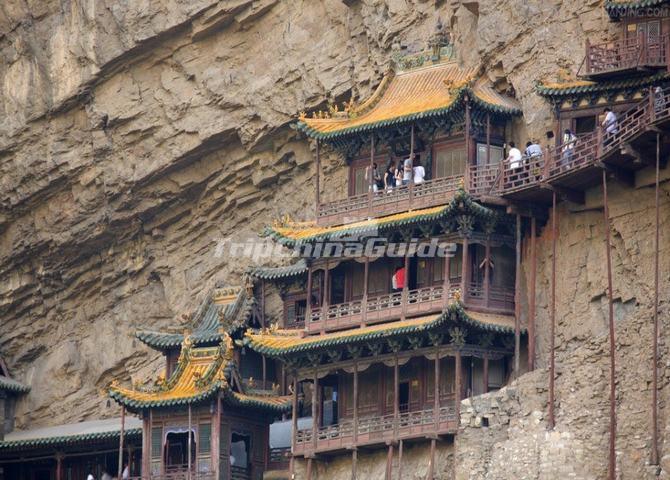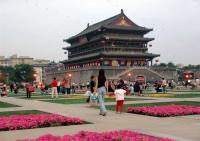Hanging Temple
The Hanging Temple, located in Hunyuan County, about 60 km southwest of Datong, Shanxi province in China, stands at the foot of Mount Heng (Hengshan). Based on the history of Mount Heng, the temple was first built at the end of the Northern Wei Dynasty (about the sixth century). It was said to be built by a monk named Liao Ran. After many times of repairs and extensions, it got its present day scale. The temple is built into a cliff (about 75 m above the ground) and is over 50 meters tall.
The temple was constructed by drilling holes into the cliff side in to which the pole that hold up the temples are set. Interestingly, the temple is dedicated to not just one religion, but three, with Confucianism, Taoism, and Buddhism all worshiped within the temple and represented in 78 statues and carvings throughout the temple.
All the buildings in the temple were hung on the cliff of the Mount Heng. The buildings stand vertically to the cliff and the peak of the cliff looks like upside down. Seen from the distance, the temple seems to sticks to the precipice. The temple hang in the air, with red walls and gray title, which makes it looks like a flying little phoenix. The buildings are arrayed in a line from the south of the cliff to the north, and heightened gradually like a dragon phonating on the cliff.
Inside the temple, different cultures directly encounter one another here. This building is a perfect combination of religion and culture of Chinese feudal society. Statues of Confucius, Laozi (a scholar in ancient China) and Sakyamuni, the founders of Confucianism, Taoism and Buddhism respectively, are enshrined in the Sanjiao Hall. The statue of Sakyamuni stands in the middle, that of Laozi on the right and Confucius on the left, with different expressions.














